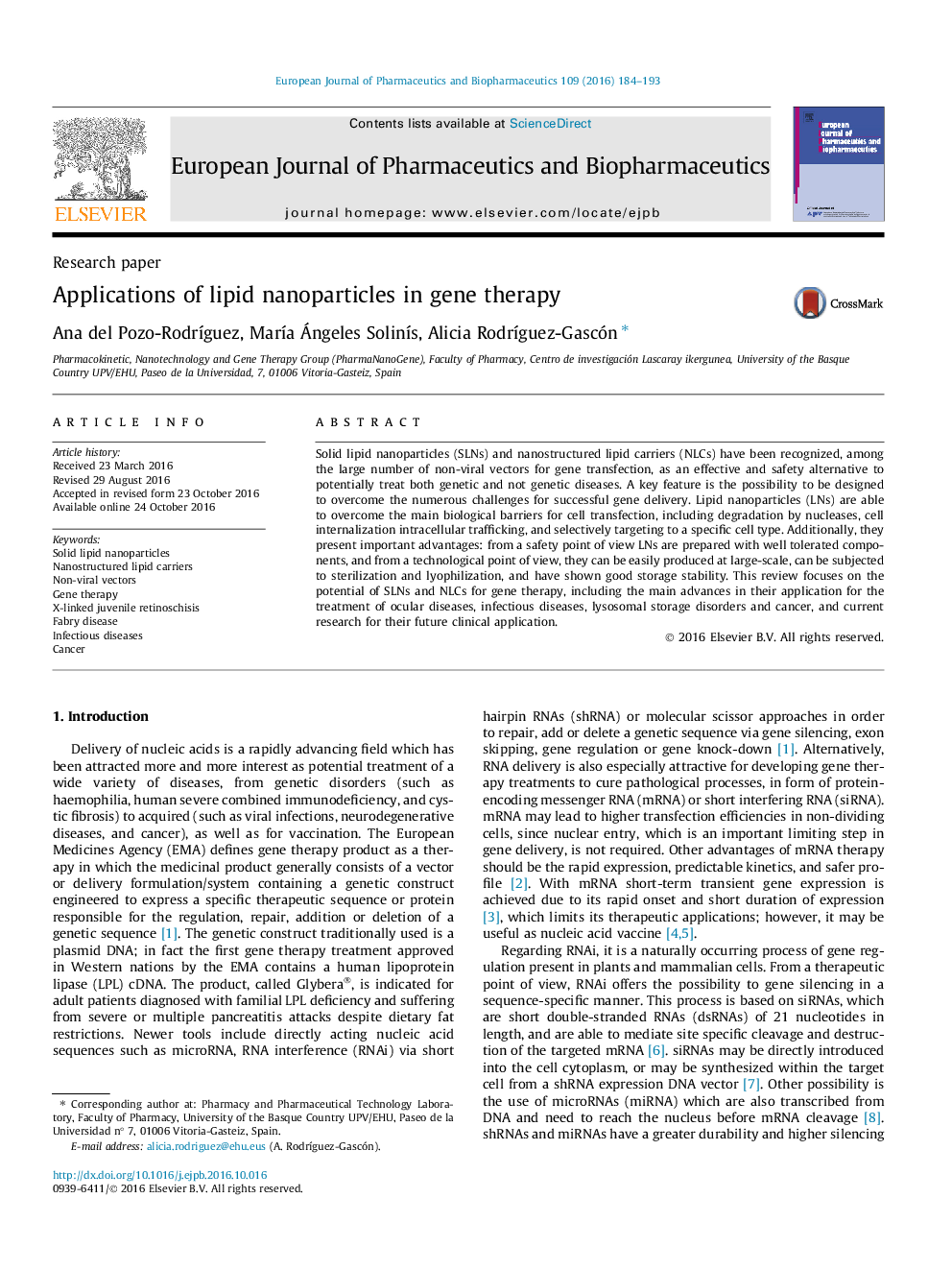| Article ID | Journal | Published Year | Pages | File Type |
|---|---|---|---|---|
| 5521671 | European Journal of Pharmaceutics and Biopharmaceutics | 2016 | 10 Pages |
Solid lipid nanoparticles (SLNs) and nanostructured lipid carriers (NLCs) have been recognized, among the large number of non-viral vectors for gene transfection, as an effective and safety alternative to potentially treat both genetic and not genetic diseases. A key feature is the possibility to be designed to overcome the numerous challenges for successful gene delivery. Lipid nanoparticles (LNs) are able to overcome the main biological barriers for cell transfection, including degradation by nucleases, cell internalization intracellular trafficking, and selectively targeting to a specific cell type. Additionally, they present important advantages: from a safety point of view LNs are prepared with well tolerated components, and from a technological point of view, they can be easily produced at large-scale, can be subjected to sterilization and lyophilization, and have shown good storage stability. This review focuses on the potential of SLNs and NLCs for gene therapy, including the main advances in their application for the treatment of ocular diseases, infectious diseases, lysosomal storage disorders and cancer, and current research for their future clinical application.
Graphical abstractDownload high-res image (95KB)Download full-size image
